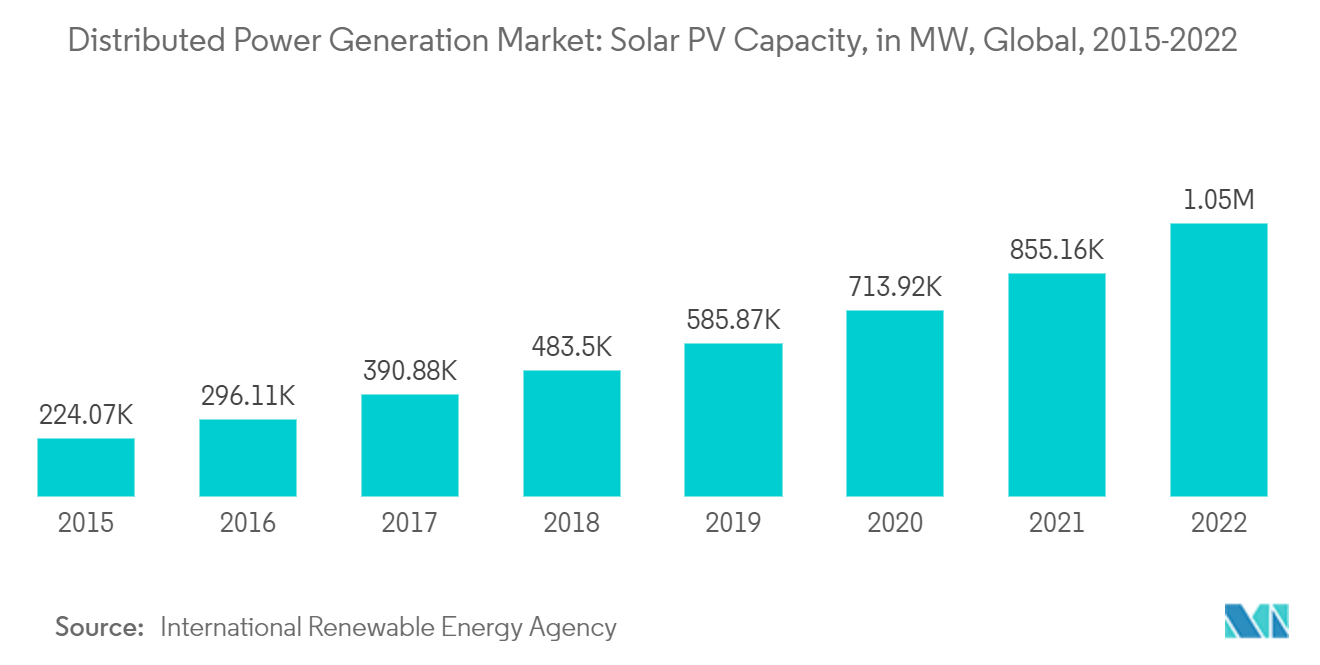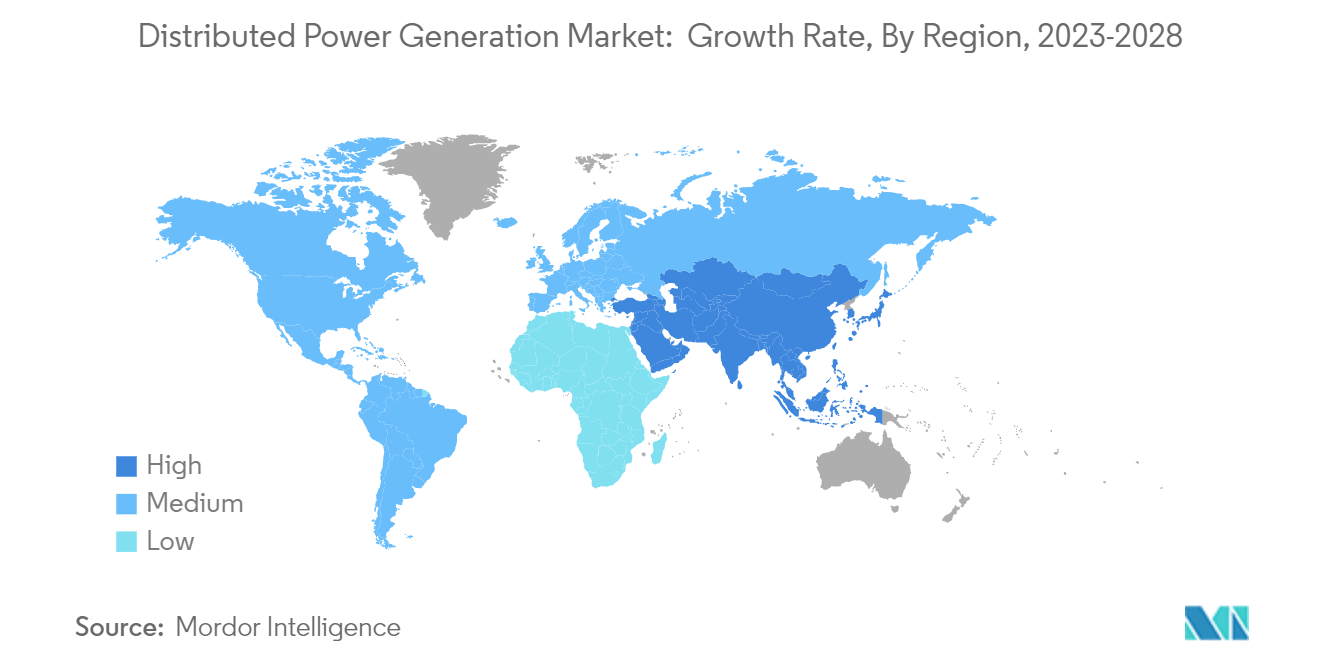Market Trends of Distributed Power Generation Industry
Solar PV to Dominate the Market
- The residential segment is expected to expand rapidly over the forecast period. Off-grid rooftop solar PV equipped with an energy battery storage system provides reliable secondary power to residential households, thereby boosting product demand across the segment. The deployment of large-scale storage systems to protect against peak demand power changes has resulted in the adoption of extra-large rooftop solar PV systems to store desired power in batteries.
- Rooftop Solar energy systems can be built, depending on the requirements. It enables consumers to save on their electric utility bills. Solar installations in households are called behind-the-meter solar," since the meter captures how much electricity the consumer is purchasing from a utility. Since distributed solar energy systems are called behind-the-meter, consumers do not pay the utility for the solar power generated.
- According to the location, the solar panels only convert between 15% and 20% of the total solar irradiation at noon on a bright, sunny day into electricity. The polycrystalline or monocrystalline panels are installed on rooftops, open grounds, or walls, with the front facing the sun, to produce sufficient energy in a day.
- As per International Renewable Energy Agency (IRENA) statistics, in 2022, the solar photovoltaic energy capacity was around 10,46,614 MW, up by 22.4% from the previous year. In the period under consideration, figures presented a trend of continuous growth.
- With the downward trend of solar panel and battery storage prices and declining construction costs, establishing distributed PV with a battery storage system and evacuating solar energy at 11 kV or 33 kV is an attractive proposition. It will reduce transmission line losses, increase grid resilience for rural feeders, avoid transmission distribution losses, reduce generation costs, and reduce investment costs in new utility generation capacity.
- Hence, due to technological interventions in solar PV, the declining cost of electricity generation and ease of construction of solar systems are expected to drive the distributed power generation market.

Asia-Pacific to Dominate the Market
- Asia-Pacific holds the largest market share and has witnessed increasing energy demands in countries such as China, India, and ASEAN member states. China has a widespread manufacturing sector, which creates a need for power for operations. Thus, distributed power generation is used in this region to supply uninterrupted power.
- Strong government support, technological progress, and awareness regarding managing carbon emissions are the main drivers for the renewable energy market. This has facilitated the rapid development of China's renewable energy sector. By the end of 2022, China was expected to install 48 GW of distributed generation. China's distributed solar power is dominated by industrial and commercial enterprises, which mainly adopt the EMC (energy management contract) model to build DSPV power plants. The high price of land in China is creating opportunities for deploying solar rooftops.
- In India, the installed capacity of solar was expected to reach 61 GW in 2022. To complete the target of deploying 100 GW of solar installed capacity, a slew of schemes such as solar park schemes, VGF schemes, CPSU schemes, defense schemes, canal bank and canal top schemes, bundling schemes, grid-connected solar rooftop schemes, etc., and policy measures have been introduced in recent years.
- With India planning to add a massive 500 GW of renewable energy to its electric grid by 2030, it is critical to plan what kind of grid architecture will support this level of renewable integration, which is likely unprecedented anywhere else in the world. Distributed renewables present a solid case for being a big part of the future grid.
- Additionally, with various places located in remote parts of the country where grid expansion is not feasible, distributed generation can significantly benefit businesses and owners.
- Asia-Pacific holds vast potential for expanding distributed energy systems (DES), notably off-grid and residential solar. Inefficiencies in the power grid infrastructure, power supply shortages, and the scalability of decentralized technology are driving the deployment in the region, particularly in China and India.

